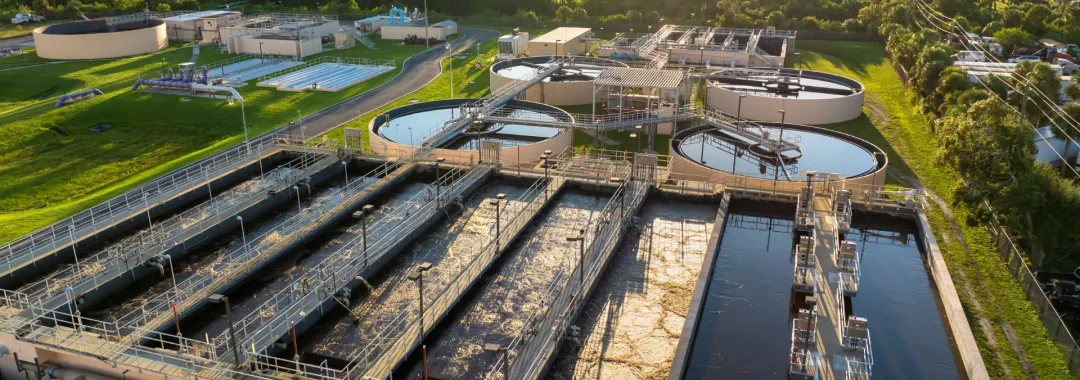Introduction — The Need for Sludge Volume Reduction Systems
Managing sludge is one of the toughest challenges in industrial and food-processing wastewater treatment. A sludge volume reduction system plays a vital role in minimizing the amount of sludge generated during treatment, significantly cutting transportation and disposal costs.
From dairy and seafood factories to beverage and palm oil plants, industries face mounting pressure to handle sludge sustainably while meeting environmental regulations. A well-designed sludge volume reduction system not only reduces waste volume but also supports energy recovery and carbon footprint reduction.
Understanding Sludge Volume Reduction
Sludge volume reduction refers to the process of minimizing water and solid content within sludge to make it easier and cheaper to manage.
Common goals of a sludge volume reduction system include:
- Reducing total solids for easier handling and disposal.
- Lowering moisture content before drying or incineration.
- Optimizing energy recovery from biogas systems.
There are several main approaches to sludge reduction:
- Physical: thickening, dewatering, centrifugation.
- Chemical: conditioning and polymer dosing.
- Biological: endogenous decay and cryptic growth.
- Thermal & Advanced: hydrolysis, ultrasonic, and oxidation processes.
Sludge Characteristics in Industrial and Food-Processing Facilities
Industrial sludge often contains higher levels of fats, oils, grease, and organic matter compared to municipal sludge. Food-processing plants, in particular, deal with variable sludge quality depending on seasonal production.
Challenges include:
- High organic and grease loads reducing filter efficiency.
- Odor and pathogen issues.
- Unstable sludge consistency.
These factors require customized sludge volume reduction systems tailored to each industry’s composition and processing needs.
Physical and Chemical Sludge Volume Reduction Techniques
Physical processes like thickening, centrifugation, and dewatering mechanically remove water content from sludge. Common methods include filter presses, belt presses, and screw presses.
Chemical conditioning uses coagulants (e.g., ferric chloride) and polymers to improve dewatering performance. Proper chemical selection enhances sludge settling and reduces volume effectively.
For example, a palm oil processing plant achieved 40% sludge reduction using a centrifuge + polymer dosing system.
👉 Related: Water Treatment Supply and Sludge Management Solutions
Biological Methods in Sludge Volume Reduction Systems
Biological sludge reduction techniques focus on using microorganisms to naturally consume or break down biomass.
Main methods include:
- Endogenous respiration: microbes use their own stored carbon for energy, reducing solids.
- Cryptic growth: microbes consume dead biomass, minimizing residual solids.
- Bioaugmentation: specialized bacteria accelerate degradation for faster results.
These techniques require longer retention times but yield sustainable and chemical-free results.
📖 Reference: Biological Mechanisms for Sludge Reduction — PMC Research
Advanced and Hybrid Sludge Volume Reduction Systems
Advanced technologies increase the efficiency of sludge reduction. Examples include:
- Thermal hydrolysis: high-pressure steam treatment to break sludge structure.
- Ultrasonic disintegration: mechanical vibration ruptures microbial cells, improving dewaterability.
- Ozone or oxidation: reduces pathogens and volatile solids.
Hybrid setups combine multiple stages, such as ultrasonic + dewatering or biological + thermal treatment, to achieve up to 60% volume reduction.
🔗 Learn more: Sludge Dewatering Overview — Wikipedia
Cost and Energy Efficiency in Sludge Reduction
Implementing a sludge volume reduction system can significantly lower operational costs. Key considerations:
- CapEx vs OpEx: balance between equipment cost and long-term energy savings.
- Energy recovery: integrate anaerobic digestion or biogas utilization.
- Chemical consumption: optimize polymer dosing for efficiency.
A cost-benefit analysis often shows ROI within 2–3 years for industrial-scale systems.
Environmental and Regulatory Compliance
Reducing sludge volume helps industries comply with Indonesia’s environmental regulations (PP No. 22/2021) by lowering waste generation and emissions.
Additional benefits include:
- Reduced transport and disposal footprint.
- Alignment with ISO 14001 environmental standards.
- Contribution to ESG and sustainability goals.
Designing a Sludge Volume Reduction System
Effective design ensures performance and reliability:
- Sludge characterization — analyze solids content and composition.
- Pilot testing — evaluate best reduction methods.
- Technology selection — choose between physical, biological, or hybrid.
- Integration — connect with existing wastewater treatment.
- Automation — use sensors for optimal dosing and monitoring.
👉 Related Product: AFM Filter Media for Industrial Wastewater
Conclusion — Smarter Sludge Management for Sustainable Industry
A sludge volume reduction system is a critical component of sustainable industrial wastewater management. By combining physical, biological, and thermal processes, facilities can reduce sludge by up to 80% while recovering energy and lowering operational costs.
Partner with PT Gapura Liqua Solutions — your trusted partner for integrated sludge volume reduction systems and wastewater optimization in the industrial and food-processing sectors.
